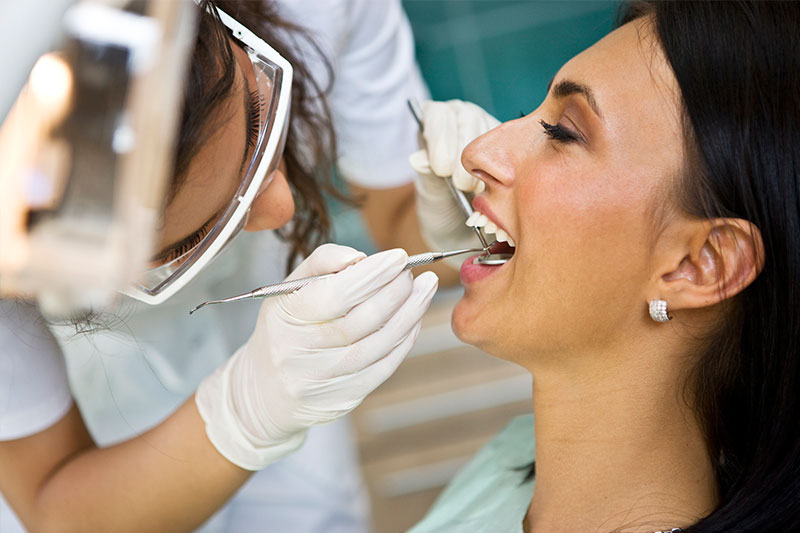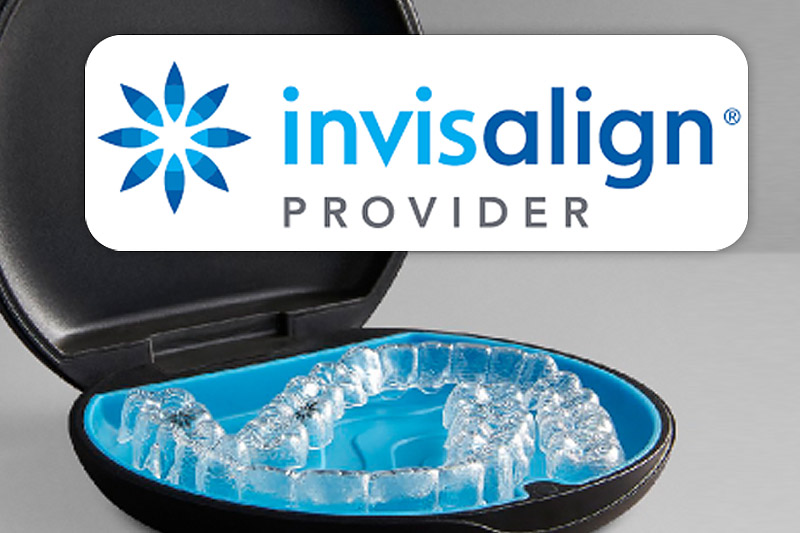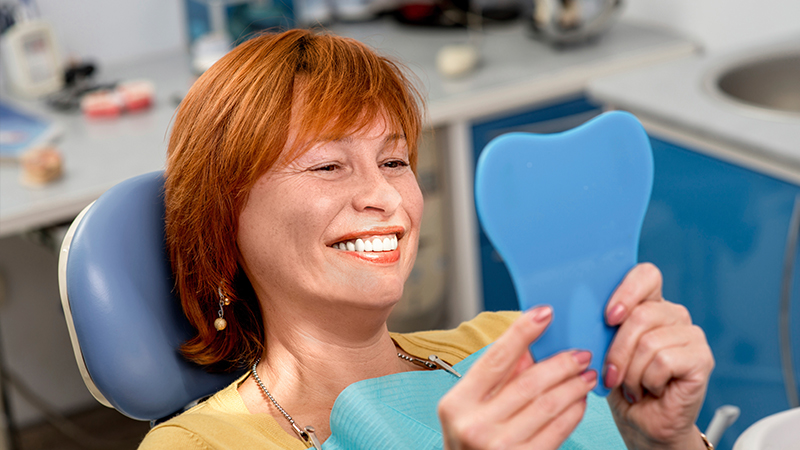Author: admin
Importance of Dental Exam & Teeth Cleaning Watertown MN
No matter how diligent your at-home oral care routine is, harmful bacteria can still hide in your mouth in places that are hard to reach with regular brushing and flossing. After some time, the accumulated plaque and tartar can pose serious risks to your oral health and even affect your overall health if the bacteria spreads from your mouth to various body tissues. As such, it should be removed by a dental professional using specialized oral cleaning tools at a recommended interval.
Bacteria Growth in Your Mouth
The warm and moist environment in your mouth is very hospitable for the growth of bacteria, which manifests as:
- Plaque – the biofilm formed by bacteria colonies living in your mouth. It is responsible for producing acid that can wear your teeth causing cavities and/or damage gums if not continuously removed by regular brushing
- Tartar or calculus – forms when plaque is not removed properly, causing it to calcify and mineralize into a hard substance that attracts more harmful bacteria. Calculus can only be removed during dental cleanings using specialized tools.
Dental Cleanings Prevent Gum Disease
Bacteria in your mouth can accumulate to a point where it becomes active and destructive, resulting in gum infection. The first stage of gum infection is known as gingivitis, and is characterized by gum inflammation, swelling, and reddening. Due to sensitive gums, you may also notice some blood on your toothbrush or when rinsing your mouth after brushing. Fortunately, gingivitis can be successfully treated with professional dental cleaning and an improved at-home oral care routine.
If there are no interventions, gingivitis can advance to a more serious case of gum disease known as periodontitis or periodontal disease. It affects the foundation of your teeth – the bone tissue connecting your teeth to the jaw. If not treated promptly, periodontitis can cause severe bone loss that loosens your teeth with some even falling out. Though it’s irreversible, dental professionals can help you manage the symptoms and improve your oral health.
Schedule Your Dental Cleaning Today
Your dentist will examine your teeth and gums to determine the best type of dental cleaning in Watertown MN to improve your oral health and reduce the risk of advanced gum disease and cavities.
Dental Implant Benefits in Watertown MN
Since the invention of implant dentistry in the 1950s, dental implants have provided patients with a more reliable option to replace one or more missing teeth permanently, allowing them to enjoy the same long-term stability and ease of maintenance associated with natural teeth.
Getting a dental implant for a tooth replacement gives you a similar feeling to having a natural tooth because it stands firmly alone without requiring the support of adjacent teeth like dental bridgework. In fact, dental implants can be used to support other tooth replacements, like bridgework or dentures if you’re missing multiple teeth. Dental mini-implants can also function as temporary anchorage devices for moving crooked teeth with an orthodontic appliance, after which they’re extracted when the orthodontic treatment is completed.
Dental Implants are Good for Your Oral Health
Although there are other dental procedures that can be used to replace teeth or straighten them, dental implants are actually beneficial to your oral health in the following ways:
- Maintain the Structure of Your Teeth, Jaw, and Face – A dental implant will help to prevent the teeth adjacent to the gap from tilting or shifting, which may cause your bite to shift. The teeth on the opposing jaw may also grow irregularly because there’s no mate to make contact with, causing you to injure the gum tissue in that area and create a chronic sore spot. Moreover, the bone tissue under the gums may begin to shrink away (resorption) due to lack of stimulation during chewing, causing your face to appear aged. Implants can prevent this by integrating with the jawbone and providing stimulation when chewing.
- Conservative Restoration – Dental implants stand on their own without depending on the support of surrounding natural teeth, as is the case with dental bridgework. Implants are anchored to the jawbone, and do not affect existing healthy teeth.
- Safe – The implant is made from biocompatible materials like titanium, which fuse to the jawbone through a process known as osseointegration, without triggering any allergic reactions.
- Natural Look and Feel – Since implants integrate to the underlying bone tissue, they are so stable that they look and feel like your natural teeth. You can continue to eat your favorite foods without any worry and practice your usual oral care routine.
Learn More About Dental Implants
Dental implants were invented in 1952. With the progress of science and technology in dentistry over the decades, the outcomes of dental implant surgical placement have improved greatly, producing a success rate of over 98%. To find out whether dental implants in Watertown MN are right for you, please visit your dentist today.
Tooth Implant Process in Watertown MN
What tests are carried out during dental implant consultation?
1. Physical examination – The dentist will physically examine the gap in your mouth where you’re planning to get a dental implant placed
2. Digital imaging – X-rays, CT scans, and/or panoramic films are required to assess the quality and quantity of jawbone
3. Medical history review – Your dentist will also review your medical history by assessing any infections, allergies, bleeding disorders, existing medical conditions, and medications before proceeding with the treatment.
How do you manage pain during the procedure?
During all your surgical procedure appointments, the dental surgeon will administer a local anesthetic to numb the surgical site, as well as any sedatives that you may require to calm your anxiety and make you comfortable.
Can I switch from another tooth replacement to dental implants?
The other tooth replacement options are dental bridgework and removable dentures. Dental bridgework is a permanent restoration that should serve you satisfactorily for many years. But if your removable dentures keep slipping due to a poor fit, then you may consider getting implant-supported dentures to improve their stability.
If the implant site has signs of bone loss after tooth extraction, your dentist may recommend bone grafting to build up the bone tissue and achieve a solid base to support the implant. If grafting is to be done in the upper jaw at the back where the sinus cavity is located, the procedure is known as sinus augmentation. Bone grafting takes 2-6 months to heal before you can proceed with implant placement.
Can problems occur during implant placement?
The 98% success rate of dental implants is attributed to careful planning, which involves making sure that the patient is healthy enough to undergo dental surgery and heal and recover properly. But whenever a surgical procedure is involved, there is always an element of risk and potential complications to the success of the treatment or the patient. Your dentist will work with you to ensure a safe and successful procedure.
For more information on dental implants in Watertown MN and to find out the cost of your individual treatment, please contact us today.
Dental Implants – Associated Costs | Watertown MN
Many dental professionals today consider dental implants as the standard of care for tooth replacement. Yet, most dental insurance products do not cover the entire cost of dental implant placement because they consider dental implants as an elective procedure. That said, your insurance provider can cover the cost of getting a replacement crown depending on the material you choose for fabrication.
During your consultation, your dental team will discuss with you the expected treatment plan and total cost of getting dental implants. Generally, there is a variety in the price range for a single dental implant. The actual amount depends on:
- The position of the implant site in the mouth
- Experience of the oral surgeon performing the procedure
- The location of the dental practise
- Cost of the replacement crown
- Complexity of your case – affects cost of dental services and dental materials consumed
Costs Associated with Complex Dental Implants
The standard procedure for performing a dental implant includes:
- Tooth or teeth removal and site preparation before placing the dental implant.
- Implant placement – A dental implant (titanium post) is placed into the bone using a special drill and tools. The surgeon will then place a “healing cap” over the implant before stitching up the gum.
- Monitoring visits – You will have to wait for 2-6 months for the site to heal and the implant to integrate with the bone tissue. A temporary denture will be placed at the site for aesthetic purposes. You will need to visit your oral surgeon or dentist to track your recovery and make sure that there is no infection.
- Abutment placement – After successful integration of the implant to the bone, an abutment will be connected to the implant using a screw. Then an impression of the abutment is taken and sent to the dental lab to fabricate your custom crown.
- Tooth replacement – When the crown is ready, it will be secured to the abutment by cementing or with a screw.
But if the implant site has signs of bone loss after tooth extraction, your oral surgeon may recommend bone grafting or sinus augmentation to build up the bone tissue and achieve a solid base to support the implant. This takes 2-6 months to heal before you can proceed with implant placement. During this time, you will need to make regular dental visits for tracking your healing.
Get Dental Implants Today
Although dental implants are expensive, and the treatment takes several months before you can start enjoying your investment, the final result is extremely satisfying. Dental implants look, feel, and function like your natural teeth, and after treatment, you won’t need to see your dentist for follow-up visits, except for routine professional cleaning.
For more information on dental implants in Watertown MN and to find out the cost of your individual treatment, please contact us today.
Dental Crowns Treatment – What to Expect | Watertown MN
Your dentist may recommend dental crowns if you have a severely decayed or fractured tooth that cannot be successfully restored using dental filling or bonding. Crowns can also be used to strengthen a tooth that has been treated with root canal therapy; to support dental bridgework for replacing missing teeth; or to act as the tooth replacement itself when anchored to a dental implant.
There are two categories of dental crowns: those prepared and placed on the same day, and those that are fabricated in a dental laboratory and require two appointments to complete the treatment.
Same-Day Crowns
You can get your permanent crown prepared and installed on the same day, if the material is suitable for crafting in the dentist’s office. This is the case for zirconium crowns. The tooth is prepared the normal way. But instead of making an impression of the tooth, the dentist uses a wand scanner to capture pictures of the teeth. The images are uploaded into a computer where CAD software (computer-aided design) is used to design a 3D model that can be used to fabricate a replacement ceramic crown in about 15 minutes.
Regular Dental Crowns
Most of the materials used for dental crowns, including porcelain and metals need to be crafted into custom crowns in a dental lab. This process takes two to three weeks, so you’ll have to wear a temporary crown in the meantime.
The tooth preparation process involves removal of any decay and infection, followed by filing down the tooth to maximize the retention of the crown and to ensure a good fit that doesn’t distort your smile. This process is carried out under local anesthesia. After tooth preparation, a mold or impression of the tooth will be made and sent to the lab to fabricate your permanent custom crown. An impression of the opposing tooth may also be created to ensure a perfect fit with the mouth closed.
Impressions are created using putty or paste that is spread over the prepared tooth and then pulled away so it keeps the shape of the tooth involved. The dentist can also note down specific details about the replacement tooth, such as the natural shade and fit, so it’s unnoticeable when you smile.
To protect the prepared tooth, a temporary or transition crown will be placed on it. This crown is typically made from plastic material (acrylic), and is held in place using a temporary cementing medium to allow easy removal at your next visit. When the permanent crown is ready, it will be fitted and adjusted for any bite variations. The dentist will check for accuracy and assess the aesthetics. If there are no issues, the crown can be cemented to your tooth.
Maintain Your Healthy Teeth and Smile
To ensure the longevity of your restoration and prevent damage to your other teeth, you should practice good oral hygiene as instructed by your dentist.
To ask about Dental Crowns in Watertown MN please contact us today.
Dental Crowns for Tooth Replacement & Cosmetic Purposes | Watertown MN
A dental crown is a customized tooth cap designed to cover a damaged tooth in order to restore its shape and size, enhance its strength, and improve its appearance. When successfully cemented in place, a dental crown encases the portion of the tooth above the gum line, providing total protection.
Dental Crowns for Tooth Repair
This may be necessary if you have extensive tooth damage that has compromised the structure of your natural teeth. For instance, your dentist may recommend dental crowns to:
- Protect a chipped, broken, or fractured tooth and prevent further damage
- Repair large cavities that cannot be successfully repaired with dental fillings
- Replace previously placed fillings and strengthen the tooth.
- Encase a tooth restored with root canal therapy to strengthen it and cover up the filler material for an aesthetic finish
Dental Crowns for Tooth Replacement
If you want to replace one or more missing teeth, your dentist may recommend either bridgework or implants. A dental bridge refers to an artificial tooth that is anchored to the teeth adjacent to the gap, holding it firmly in place. The artificial tooth is bonded to the adjacent teeth through dental crowns so it stays suspended in the gap. If you opt for dental implants, a titanium post will be implanted into the jawbone to serve as the tooth root. Once it heals, a crown will be connected to the post via an abutment, becoming your replacement tooth.
Dental Crowns for Cosmetic Purposes
Dental crowns are custom-made to restore the shape, size, and even shade of a damaged tooth if you use a tooth-colored crown. As such, your dentist may recommend crowns to enhance the appearance of imperfect teeth such as:
- Excessively or unevenly worn down – resulting in very short teeth
- Badly shaped teeth
- Severely stained teeth
- Widely gapped teeth
Learn More about Dental Crowns
Depending on your specific case, your dentist will help you choose the most appropriate material for your custom dental crowns, restoring the function or aesthetic of your mouth, or both. To learn more about Dental Crowns in Watertown MN please contact us today.
Teeth Cleaning & Dental Exams in Watertown MN
Dental cleaning is a simple, painless, and non-invasive preventive dental procedure that seeks to reduce the risk of dental issues such as cavities, gum disease, and bad breath by removing built-up plaque and tartar. Patients often experience some mild vibrations, cooling mist of liquid, and a bit of pressure during scraping, though this doesn’t cause any discomfort. On the contrary, the feeling can be quite satisfying in knowing that you can keep enjoying your healthy teeth and smile for longer.
Ideally, dental cleanings should be performed every six months, but your dental hygienist may recommend shorter intervals if you’re at greater risk due to pregnancy, your lifestyle habits, or your general health. Moreover, if you have gum disease, your dental hygienist may recommend deep scaling – as opposed to regular dental cleaning – to remove plaque from your tooth roots as well.
Generally, the first step before any dental cleaning is an examination of your mouth. The dental hygienist needs to physically check your teeth, gums, tongue, and the entire mouth for any concerns using a small mirror. If there are no problems, then the procedure for dental cleaning may be as follows:
1. Plaque and Tartar Removal: A scaler is used to remove plaque and calculus from the surface of individual teeth, between the teeth, and around the gum line. This step may take longer if it has been a long time since your last cleaning.
2. Polishing: A high-powered brush with a soft rubber cup and gritty toothpaste helps to gently scrub and polish your teeth. This not only removes any surface stains, but also makes your tooth surface smooth and shiny to make it harder for plaque to form.
3. Expert Flossing: This step helps to thoroughly clean the area between your teeth to remove any leftover plaque and toothpaste from the previous steps.
4. Rinsing: The dental hygienist uses a mouth rinse with liquid fluoride to remove any debris and clean your mouth.
5. Fluoride Treatment: As the final step, your dental hygienist may apply flavored fluoride by putting it in flexible trays that are then placed over your teeth for 30 seconds. This helps to strengthen your teeth and enhance the protection against plaque and calculus.
To learn more about what to expect from a Cleaning and Exam in Watertown MN procedure, please contact your dental office today.
Dental Check Ups & Teeth Cleaning Near Me, Watertown MN
Many people today know about the importance of oral health and how it affects your overall health. Optimal oral hygiene requires a combination of proper and consistent daily oral hygiene practices at home and routine professional dental cleanings. This helps to protect your teeth from decay and keep the gums healthy, while keeping your smile bright.
However, one thing that may not be clear is why the American Dental Association recommends dental cleanings every six months. Generally, brushing your teeth twice a day and flossing every day should help to remove most of the harmful bacteria from your teeth and mouth. But the small quantity of bacteria that remains may still pose a threat to your oral health over time, if it’s not removed.
Some of the risks include:
- Excessive tooth wear and cavities from the acid produced by plaque
- Bad breath from improper teeth cleaning
- Teeth discoloration from the colored foods you consume and calcification and mineralization of plaque in the form of tartar or calculus, which attracts more harmful bacteria
- Minor gum infection or gingivitis, which is characterized by gum inflammation, swelling, and reddening. Due to sensitive gums, you may also notice some blood on your toothbrush or when rinsing your mouth after brushing.
- Advanced gum infection – If there are no interventions, gingivitis can advance to a more serious case of gum disease known as periodontitis or periodontal disease. It affects the foundation of your teeth – the bone tissue connecting your teeth to the jaw.
- Exacerbated health issues – the infection can spread from your mouth to other tissues, making it harder to manage other conditions such as diabetes, heart disease, and dementia
Cleanings for Optimal Oral Health
Fortunately, most of these problems can be successfully treated or managed with professional dental cleaning and an improved oral care regimen at home. That said, periodontitis is a chronic, progressive, and episodic gum infection. If not treated promptly, periodontitis can cause severe bone loss that loosens your teeth with some even falling out. Though it’s irreversible, dental professionals can help you manage the symptoms and improve your oral health.
Please visit your dentist today to examine the condition of your teeth and gums and determine the best type of dental cleaning in Watertown MN to improve your oral health and reduce the risk of advanced gum disease and cavities.
Laser Dentistry in Watertown MN
A new and wonderful era in dentistry has begun. Our high-tech office is pleased to offer this state-of-the-art technology to our patients. Lasers are an amazing new technology for the dental office, delivering more precise, minimally invasive, and more effective treatments for cavities, gum surgery, orthodontics, and other oral issues
With laser dentistry, our dentist can:
- Perform gum surgery without the need for needles and no bleeding or stitches, allowing patients to eat, drink and talk right after surgery with minimal discomfort.
- Fill teeth without the need for needles, allowing you to eat and talk and chew right after receiving dental fillings.
- Remove decay from small fillings and replace them with the natural color of your tooth.
- Perform dentistry without the need for a drill!
- Sterilize your restoration and gum tissue as it’s healing.
How laser dentistry works
Laser dentistry is a safe technique that uses extremely focused beams of light to remove or alter small amounts of tissues. This mode of treatment has been used in clinical dental practice since 1989, though it started to become popular in 1994 after FDA approval.
The artificial, amplified light energy released as a laser beam can be used to separate tissue by a process known as thermal ablation. Unlike a scalpel that slices, thermal ablation causes the temperature of the target tissues to rise rapidly. As a result, those cells instantly undergo a micro-explosion referred to as spallation.
Compared to traditional dentistry, laser dentistry offers several benefits that include:
- Reduces or completely eliminates pain during the procedure
- Eliminates the need for anesthesia which in turn reduces recovery time.
- Enhances precision when delivering treatment
- Reduces damage to surrounding tissues
- Promotes blood coagulation at treatment sites to eliminate or minimize the need for sutures
Schedule your laser dentistry consultation today
Compared to the use of a scalpel or drill in traditional dentistry, lasers allow for gentle and virtually painless treatment, eliminating the anxiety associated with dental treatments. Contact your dentist in Watertown MN today for a personal consultation.
Who Is A Good Candidate for Dental Implants? Watertown MN
If you have lost most or all of your teeth due to advanced gum disease or decay, it will become nearly impossible to maintain the function of your mouth, whether it’s eating or speaking properly. Your smile will also be affected. In such a case, your dentist may recommend a tooth replacement solution such as removable dentures or dental implants. That said, there is a high likelihood that you will want dental implants to be included in your treatment.
To Replace One to Several Teeth
If you have gaps between your teeth, a dental implant will help to prevent the teeth adjacent to the space from tilting or shifting, which may misalign your bite. The teeth on the opposing jaw may also grow irregularly because there’s no mate to make contact with, causing you to injure the gum tissue in that area. This can create a chronic sore spot and discomfort. Moreover, the bone tissue under the gums may begin to shrink away (resorption) due to lack of stimulation during chewing, causing your face to appear aged. Dental implants can prevent these issues.
To Replace Teeth in the Entire Upper or Lower Arch
Innovations in the use of dental implants have led to the discovery of a placement technique known as “All-On-4” that provides a stable and comfortable prosthesis using only four implants to support tooth replacements in the entire upper and/or lower arch. The implants are placed in strategic areas that have sufficient bone structure, providing firm support for dentures to be screwed on permanently. The result is stable teeth replacements that feel and function like your natural teeth.
Are You a Good Candidate for Dental Implants?
There are several factors that may affect your suitability as a candidate for dental implants, including:
- Position of the missing tooth in the mouth
- Quality and quantity of jawbone in the area with the gap
- General health of the patient
- Cost of treatment
If you have one or more missing teeth, dental implants can provide you with a stable replacement that looks and feels like your natural teeth, so you can continue to eat your favorite foods without any worry and practice your usual oral care routine.
To learn more about dental implants in Watertown MN and how they can help to restore the function and aesthetic of your mouth, please visit your dentist today.

New Patient Exam Xrays and Regular Cleaning $67
Includes consultation, exam, and x-rays. In the absence of periodontal disease. New Patients Only
Make Appoinment
Invisalign
With advances in dental technologies, it is now possible to straighten your teeth discreetly without the use of traditional metal braces.
Learn more










